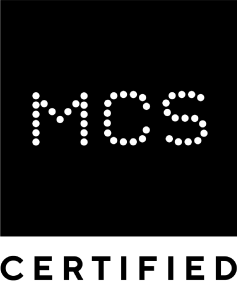Solar energy is becoming a serious force in the provision of the UK’s electricity.
We are seeing panels popping up on roofs, on solar farms and in urban community solar parks as the country moves into a brighter, greener future.
The only downside to solar, in the eyes of the public, is that solar panels are not the most attractive addition to homes or the landscape.
The look of solar panels has prevented people from installing panels on their houses, created tensions in communities and squashed plans for national solar parks.
So, what’s the answer? See-through solar!
What is a Transparent Solar Panel
It’s exactly what it says on the tin – you can see right through them! But how?
Well, it’s all to do with moving away from purified silicon to other semiconductors like cadmium-telluride (CdTe), kesterite, chalcopyrite, dye-sensitized, organic, amorphous silicon and perovskites.
Now, those are just the kind of words Professor Brian Cox would use and they don’t mean much to us less technical types, so we’ll just simply explain perovskites, as they are the most promising.
Perovskites
Perovskites are made out of star dust.
Yes, really, they are formed in dying stars, brown dwarfs, as the temperature cools and the mass of the material increases.
Here on earth, it was discovered in the Ural Mountains of Russia by Gustav Rose in 1839 and is named after Russian mineralogist Lev Perovski.
In layman’s term, perovskites act in the same way silicon does, in that electric energy is created when light particles (photons) jiggle the electrons inside the material.
Where perovskites differ from silicon is they are much better at getting that electricity through the material and out to the wires that feed your home.
I did say we’d simplify it!
The disadvantage of perovskites is they are much more organic and degrade every quickly, and we mean quickly. A silicon cell could take over 50 years to lose its ability to create electricity, while some experimental perovskite cells did it in a matter of hours.
That said, the technology is developing now to the point where, for a price, you can have a transparent cell.

Partially Transparent Solar Panels
To achieve a semi-transparent panel, a perovskite, or similar material, solution is created and used to coat glass.
It can be laid on quite thin or in bands to keep the panel see-through.
There are few great advantages of this kind of tech:
- Panels do not need to be angled to absorb the daylight
- They can get very hot without losing efficiency
- Can be used as windows, phone screens or other places glass is used.
- Very, very lightweight
Of course, if this was all there was to a semi-transparent panels, we’d be surrounded by them, unfortunately, the boffins are still trying to iron out a few disadvantages:
- Efficiency is only 10% compared to 20% – 24% of traditional panels.
- Low efficiency means more panels, so costs go up for an installation.
- Cloud cover affects performance more that silicon panels.
- Mostly made of glass so easily broken.
- Panels are mostly glass, so need to be handled carefully to avoid cracks or breakage.
Fully Transparent Solar Panels
The fully transparent solar panels are based on exactly the same tech as semi-transparent ones.
But, the transparency comes from the number of layers of perovskite solution used and the spacing of the tiny cells on the glass.
The more layers, and perovskite, the more efficient the panel but the less see-through it is.
So, the disadvantages of fully transparent solar panels are they are more expensive and less efficient.
That said, you can see straight though them!

Are Transparent Panels worth it?
We think so, to be honest.
It certainly wouldn’t be worth it in a normal domestic setting as the price, and scale, would be enormous.
But, building large buildings in cities and replacing the ordinary glass in the windows with either transparent, or semi-transparent, solar would be a fantastic idea.
In fact, if this was adopted as a regulation or requirement in the near future, we could be generating renewable energy without the need for solar farms or any unsightly power stations blighting our landscape.

Examples of transparent solar panels?
The US is leading the technology in transparent solar but not getting it out in the marketplace.
Ubiquitous Energy is developing floor-to-ceiling, transparent solar window that they can sell in high volume. They are looking to turn new-build skyscrapers into huge, vertical solar farms.
They are hoping to launch their new tech in 2024.
Scientists at Massachusetts Institute of Technology are also developing commercially available see-through solar and are managing, in smalls ways, to increase the efficiency before they release their finding to the commercial sector.
The side of the pond, the Europeans are already using this new technology.
Copenhagen International School, in Denmark have installed 12,000 “hued but clear” solar panels.
Providing 200 MW of electricity a year, the new panels produce more than half the energy the building needs.
Just south of Denmark, in the Netherlands, Physee are looking to install at least 15,000 ‘SmartWindows’ in office buildings all around Europe.
Doubling up as solar energy generators and energy management system, due to new tech that helps the building’s regulate it’s heat and power use.
Physee say installing these panels will reduce a building’s energy costs by up to 30%.
So, it’s clear to see, this glass is half full … of solar energy!







